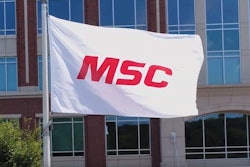According to the National Safety Council, which hosted its annual Congress and Expo Sept. 13-19 in San Diego, workplace injuries and fatalities cost our economy $198.2 billion a year. You read that right, 198.2 BILLION dollars a year. That amount of money would allow every kid in America to go to college … and pay their room and board. In an economy where every penny counts, cutting corners on safety is costing American business owners hundreds of millions of dollars every day.
Workplace deaths are rarely “accidental” – they don’t occur because of chance or randomness. Instead, they are almost always preventable. With few exceptions, OSHA investigations find workers were killed as a result of decisions made by employers not to protect them from obvious and well-known dangers.
There are, however, thousands of employers in every industry who have embraced a culture of prevention, where management and workers collaborate in efforts to “find and fix” problems. Employers who belong to OSHA’s Voluntary Protection Program or Safety and Health Achievement Recognition Program for small businesses achieve not just lower injury rates but higher profits as well.
A well-known example of the link between worker safety and profitability is ALCOA, the large aluminum manufacturer. Under former CEO Paul O’Neill, the company made safety not only a priority but a prerequisite by committing to a goal of zero injuries. By managing for workplace safety, O’Neill improved the quality of the company’s products and made ALCOA one of the most profitable enterprises in the country.
Employers that invest in workplace safety and health can expect to reduce fatalities, injuries, and illnesses. This will result in significant cost savings, including lowering workers’ compensation costs and medical expenses, avoiding OSHA penalties and eliminating the need to hire and train replacement employees. For these reasons, employers often find that changes made to improve workplace safety and health result in significant improvements to their organization’s productivity and financial performance.
When I spoke this week at the NSC Congress and Expo about protecting temporary workers, I was excited to see how many businesses took the message to heart, and thrilled to stand alongside businesses like Yoh Professional Staffing and Workplace Solutions who know safety is a key component to their success.
Workplace safety is not only the right thing to do for your workers; it’s the right thing to do for your business.
Dr. David Michaels is the assistant secretary of labor for occupational safety and health.






















